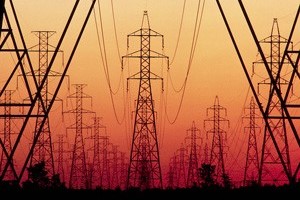 May 2010 • Tribune 27 •
May 2010 • Tribune 27 •
Europe is evolving towards a low carbon society. The power sector could be profoundly affected if this evolution is going on at the current or at a higher pace. Power generation is likely to be more and more variable and scattered and in some cases in remote places as, for example, offshore windfarms or photovoltaic power production south of Europe. On the demand side, customers are concerned with information and control over their consumption and could be more active stakeholders in the global power system. They could be at the same time power producer and consumer.
Cities will play an important role. As 71% of the world’s carbon emissions come from urban centres, cities are at the front line of the battle for a new low carbon economy. Some cities already launched energy saving projects like Amsterdam and Berlin. The Berlin Energy Agency, a public-private partnership, initiated a project aiming at generating 60% of Berlin’s power from co-generation by 2020. Moreover across Germany, a federal programme is boosting the investment in small co-generation units producing less than 50 kW. The number of such units is rising rapidly in Berlin, 50 of them being added in 2009 to some 280 that were in operation in 2008. In Amsterdam, as of September 2009, 700 homes were equipped with smart meters that give consumers a clearer sense of how much gas and electricity they use. However, as an adviser to the city stated: we have new possibilities for sustainability but the network has to be smartened.
IEA (International Energy Agency) expects the aggregate global energy demand to double from current levels by 2020 as well as electricity’s share in final energy consumption by 2030.
At the end of 2008, worldwide wind power amounted to 121 GW and the corresponding energy production to 260 TWh and they are constantly increasing. In Germany, the wind power penetration is currently above 7% according to AWEA ( American Wind Energy Association). Renewable energy share by 2020 is expected to be 33% of which 15% wind, 8% bio-energy and 4%hydro.
The need for a progressive implementation of a smarter grid has been emphasized by the power cuts that have occurred over the last years. Indeed those outings raised questions about the grid’s ability to cope with the addition of intermittent and distributed energy sources or at least demonstrated the necessity for an integrated European electricity network subject to proper regulation.
Power failure in the German electricity grid in November 2006 caused blackouts across Western Europe affecting some 10 million households across Belgium, Germany, Italy, Spain and Eastern Europe , the biggest collapse (through a domino effect) in at least 30 years.
The existing transmission and distribution grids are primarily designed for one way flow of electricity to distribute it from centre to periphery. But electricity generated, for instance, by wind farms and small domestic renewable installations follow the opposite route. With the growing implementation of large scale intermittent renewable energy generation, distributed power production and electrical vehicles, the networks are no longer adequate in Europe.
The purpose of this paper is to discuss the problems and obstacles relating to the improvements of power transmission and distribution and to the transition to smarter networks to cope with the challenges of increasing energy demand, high penetration of intermittent energy sources and distributed generation. It will also comment on the relating European policy.


